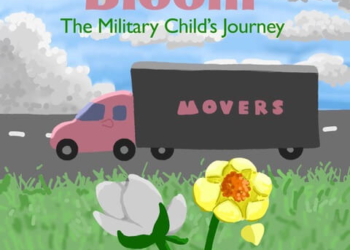For military families living overseas, traveling home for the holidays is not always practical, because of work, finances or other obligations. For those who opt to remain at their faraway duty station, they bring new meaning to “home is where the heart is.” While some continue long-standing traditions from the U.S., others adopt or build on traditions from their host country.
“In Germany, we’ve already dived headfirst into Christmas!” said Army spouse Danielle Alford. “I used to [wait] until the day after Thanksgiving to deck the halls, but here in Germany, the holiday magic starts as soon as the chill and darkness of winter sets in. By early November, our whole house is twinkling with Christmas decorations! It’s incredible how this early festive touch has really lifted the mood — especially since the cold and darkness can get pretty heavy. Now, we soak in the Christmas spirit early and start getting excited for the famous German Christmas markets!”

As the Alfords head to the market, Lucy Ann Brown Sfrsa and her family join millions of Germans in celebrating Saint Nicholas Day, or the Feast of Saint Nicholas, on Dec. 6. In anticipation of St. Nick, also known as Nikolaus, the Sfrsa family leaves their shoes out the night before.
According to tradition, if children have been good over the past year, St. Nick will fill the shoes with small gifts, treats, or money. For those who’ve been naughty, he might only leave a few twigs or sticks in their shoes.
As blustery temperatures blanket Europe, military families in Asia settle into milder temperatures and some mid-century holiday traditions.
“We wrap all of our gifts, not with wrapping paper, but with furoshiki fabric wrap,” Navy spouse Kate Hood said. Her family was stationed at United States Fleet Activities Yokosuka, Japan for three years.
“My favorite fabric is the gold Seigaiha pattern on a taupe background,” said Hood. “The Seigaiha symbolizes a peaceful sea, quiet strength, and good fortune — a very good omen if you are a Navy family.”
To top things off, Hood went a step further by hand-painting wooden Japanese Kokeshi dolls for her nativity scene.
“My Mary had a simple hand-painted pink kimono while the wise men [were painted with a] merchant style kimono from the Edo period — renowned for peace, political stability, and economic growth.”
As the New Year approached, Hood placed a “Mickey Mouse-themed shimekazari — a Japanese New Year decoration meant to bring good luck and ward off evil spirit” over her door. She and her family opted to skip the American tradition of staying up late on New Year’s Eve for Hatsuhinode, the Japanese tradition of watching the first sunrise on New Year’s Day. In the Land of the Rising Sun, Hatsuhinode is symbolic for its link to Toshigamisama, the god of the new year, and the belief that wishes made during sunrise will be granted.
Other overseas military families shared how they host communal celebrations. During the six years that April Danielle Elliott lived onboard Marine Corps Air Station Iwakuni, “we did a huge Friendsgiving with over 50 families outside our home in a green area. It always made living overseas feel like home.”
Echoing the idea of making OCONUS life feel more like home, “it is popular to order [Kentucky Fried Chicken] for your Christmas meal,” said Navy spouse Kristin McNab.
This untraditional Christmas fare became a social staple after Takeshi Okawara, the enterprising manager of Japan’s first KFC, overheard an expat expressing their longing for turkey during the holidays. Today, the demand for buckets of chicken wings, legs, and thighs is so high that orders are placed starting in early November.
With several weeks left before KFC Christmas orders are ready, the McNabs are passing the time by hitting the slopes.
“Skiing and snowboarding in the Japanese Alps is also our new holiday tradition,” said McNab. “Ski lift passes are much cheaper in Japan than in the US! We love celebrating the holidays in Japan.”
Read comments








































